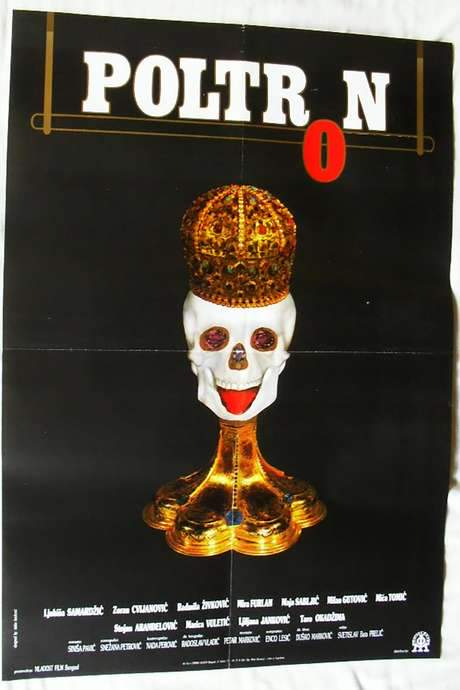
Tito and Me
Year: 1992
Runtime: 104 mins
Language: Serbo-Croatian
Director: Goran Marković
Ten‑year‑old Zoran, a student at a Yugoslav school, wins a contest for the best essay about Josip Broz Tito. As his prize, he joins his classmates on the “Revolutionary Trails” march, a school trip that leads them to Kumrovec, the small village where Tito was born, offering a vivid glimpse of history through a child’s eyes.
Warning: spoilers below!
Haven’t seen Tito and Me yet? This summary contains major spoilers. Bookmark the page, watch the movie, and come back for the full breakdown. If you're ready, scroll on and relive the story!
Tito and Me (1992) – Full Plot Summary & Ending Explained
Read the complete plot breakdown of Tito and Me (1992), including all key story events, major twists, and the ending explained in detail. Discover what really happened—and what it all means.
Set in socialist Yugoslavia during the 1950s, the film follows Zoran Dimitrije Vojnov Mihajlovic, a portly 10-year-old who shares a crowded Belgrade apartment with his artists’ parents, his aunt, uncle, and grandmother. His mother and father are artists—his father a pianist and his mother a ballerina—yet their creative world clashes with the stricter routines of the extended household, making Zoran’s everyday life feel cramped and tense.
In this era when land reform and state control reshape homes and loyalties, Zoran’s parents remain skeptical of Josip Broz Tito’s rule, even as the boy worships Tito as his personal hero. School lessons fortify that devotion, presenting Tito as the greatest man who ever lived, and Zoran clings to that belief with a child’s unwavering faith. When his poem, Why I Like the President, is judged the best in a Belgrade school contest, he earns a coveted camping trip for politically favored families, along with his crush, Jasna Milena Vukosav, an older orphan girl.
The camping trip is led by Raja Lazar Ristovski, a ruthless party member whose control and mockery sharpen a fierce rivalry with Zoran. While the other kids tease him for his weight and appearance, Zoran remains determined, dreaming not only of meeting Tito but also of gaining Jasna’s affection. The tension between him and Raja grows when Zoran witnesses the tall boy Kengur Milutin Dapčević kissing Jasna, which intensifies his insecurity and jealousy. As the days unfold, the group’s play takes a dark, absurd turn: Raja and Kengur stage themselves as ghosts, terrifying the younger campers as they spend the night at a historic castle.
Things come to a head when Raja catches Zoran trying to steal a ring he intended to give Jasna. The disciplinary moment seems decisive as Raja orders Zoran to head home by train. Yet, on the platform, a surprising solidarity forms: other students gather around, and they rally to support him, deciding that Zoran should continue the trip. The journey culminates at Tito’s childhood home, where Zoran is asked to deliver a speech. In a quiet, defining moment, he revises his own poem on stage, confessing that he loves his parents more than Tito and, in a frank line, admitting that he doesn’t even like Tito that much.
The narrative resolves at a banquet where all the children are meant to meet Tito, but Zoran emerges disenchanted. While the others crowd into the reception room, he slips away to the buffet, savoring a simple, personal moment of pleasure amid the propagandistic surroundings.
Through these incidents, the film paints a portrait of a boy negotiating fantasy and reality, ideology and affection, in a world where art, family, and state power intersect in complicated, often comic, ways. The surrounding family members—Zoran’s mother Anica Dobra, his father Miki Manojlović, and his relatives such as Zoka Ljiljana Dragutinović, his grandmother Olivera Marković, and his grandfather Rade Marković—offer a tapestry of generational voices that illustrate the era’s contradictions. Tito’s circle is glimpsed through brief, telling moments, including Tito’s adjutant Miodrag Tomović, as the film quietly questions how iconography shapes everyday life for ordinary people.
Last Updated: October 09, 2025 at 09:20
Unlock the Full Story of Tito and Me
Don't stop at just watching — explore Tito and Me in full detail. From the complete plot summary and scene-by-scene timeline to character breakdowns, thematic analysis, and a deep dive into the ending — every page helps you truly understand what Tito and Me is all about. Plus, discover what's next after the movie.
Tito and Me Timeline
Track the full timeline of Tito and Me with every major event arranged chronologically. Perfect for decoding non-linear storytelling, flashbacks, or parallel narratives with a clear scene-by-scene breakdown.

Similar Movies to Tito and Me
Discover movies like Tito and Me that share similar genres, themes, and storytelling elements. Whether you’re drawn to the atmosphere, character arcs, or plot structure, these curated recommendations will help you explore more films you’ll love.
Explore More About Movie Tito and Me
Tito and Me (1992) Scene-by-Scene Movie Timeline
Tito and Me (1992) Movie Characters, Themes & Settings
Tito and Me (1992) Spoiler-Free Summary & Key Flow
Movies Like Tito and Me – Similar Titles You’ll Enjoy
Taming Crocodiles (2006) Plot Summary & Ending Explained
Mao Tse Tung (2007) Complete Plot Breakdown
Who’s Singin’ Over There? (1980) Story Summary & Characters
The Elusive Summer of ’68 (1984) Complete Plot Breakdown
When Father Was Away on Business (1985) Movie Recap & Themes
My Uncle’s Legacy (1988) Complete Plot Breakdown
Poltroon (1989) Story Summary & Characters
Comrade Tito, I Inherit (2021) Complete Plot Breakdown
The Battle of Sutjeska (1973) Detailed Story Recap
Toto and the Kings of Rome (1952) Film Overview & Timeline
Tito Among the Serbs for the Second Time (1994) Ending Explained & Film Insights
Tomka and His Friends (1977) Detailed Story Recap
A Trip Around the World (1964) Movie Recap & Themes
Marshal Tito’s Spirit (1999) Spoiler-Packed Plot Recap
Journey Into the Depth of the Student’s Soul (1939) Full Movie Breakdown

















